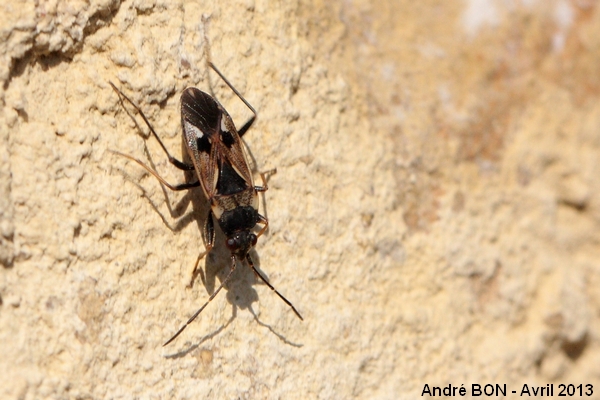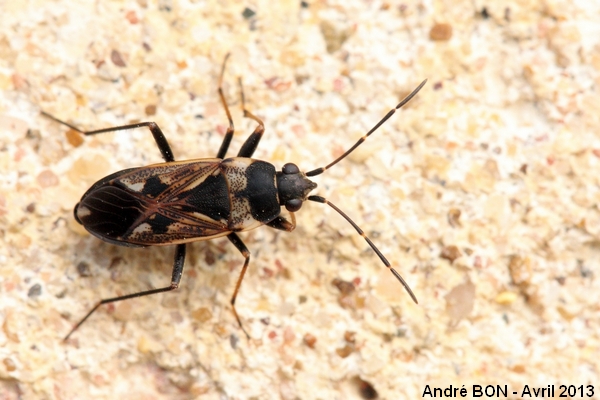

| Rhyparochromus vulgaris (Schilling, 1829) |


|
|
Scientific name: Rhyparochromus vulgaris (Schilling, 1829) Common name: French name: Order: Heteroptera Family: Rhyparochromidae Wingspan : 7-8 mm. Biotope: Half-open shaded places, woodland edges, parks and gardens. Geographic area: All Europe but missing in the northern regions, recently observed in the British Isles, Asia as far as Mongolia and Korea, North Africa. Introduced to the west of the United States. Observation period : June to the next spring. |
The Rhyparochromidae family was recently separated from the Lygaeidae family. The seed bugs of the Lygaeidae family are more red and black while those of the Rhyparochromidae family are more brown and black. Rhyparochromus vulgaris has a black head. The pronotum shows a black patch at the back of the head followed by a pale beige area marked with black dots. There is a triangular white spot on each lateral side. The scutellum is black with a pale stripe on each side. The coria each bear a black spot. The membranous wing is dark with a white spot at the tip. Tibias I and II are yellowish. Rhyparochromus vulgaris feeds on seeds of a large variety of plants. There is a possible confusion with Rhyparochromus pini. This last one has no white spot at the tip of the membranous wings, no white spot on the lateral side of the pronotum and the general colours are duller. Rhyparochromus vulgaris overwinters at the adult stage, often in large numbers, under tree bark or under wood heaps. It is sometimes brought into houses with firewood. |
| [To know more about the Rhyparochromus vulgaris] [Next picture] [Top] |

|
These bugs, observed upon the walls during the first warm days, may be just issued from their wintering period. |
| [To know more about the Rhyparochromus vulgaris] [Previous picture] [Top] |

|
The white spots on each side of the pronotum and the small white spot at the tip of the membranous wings are enough to confirm the Rhyparochromus vulgaris species. |